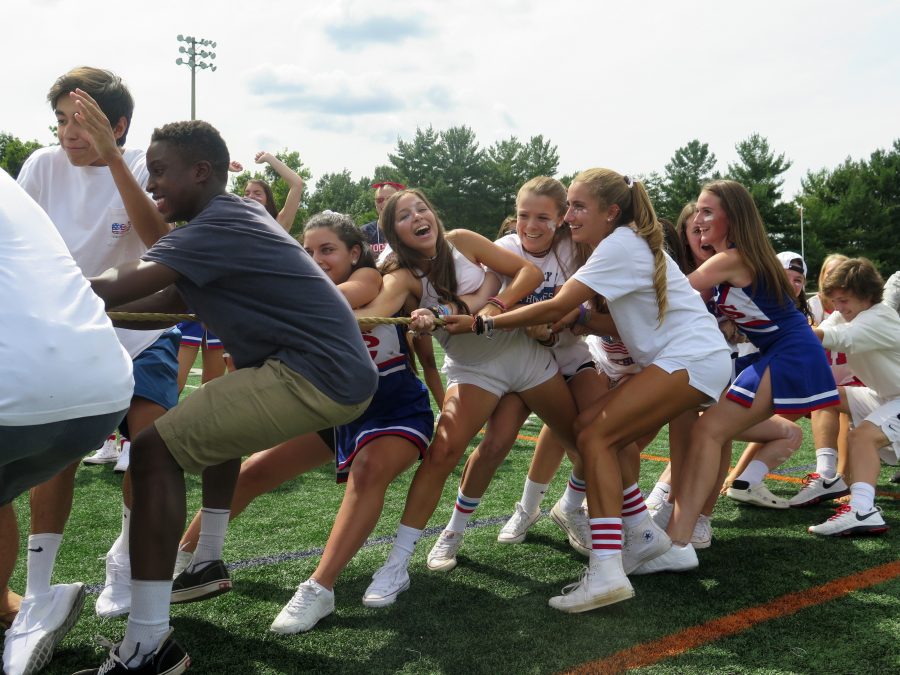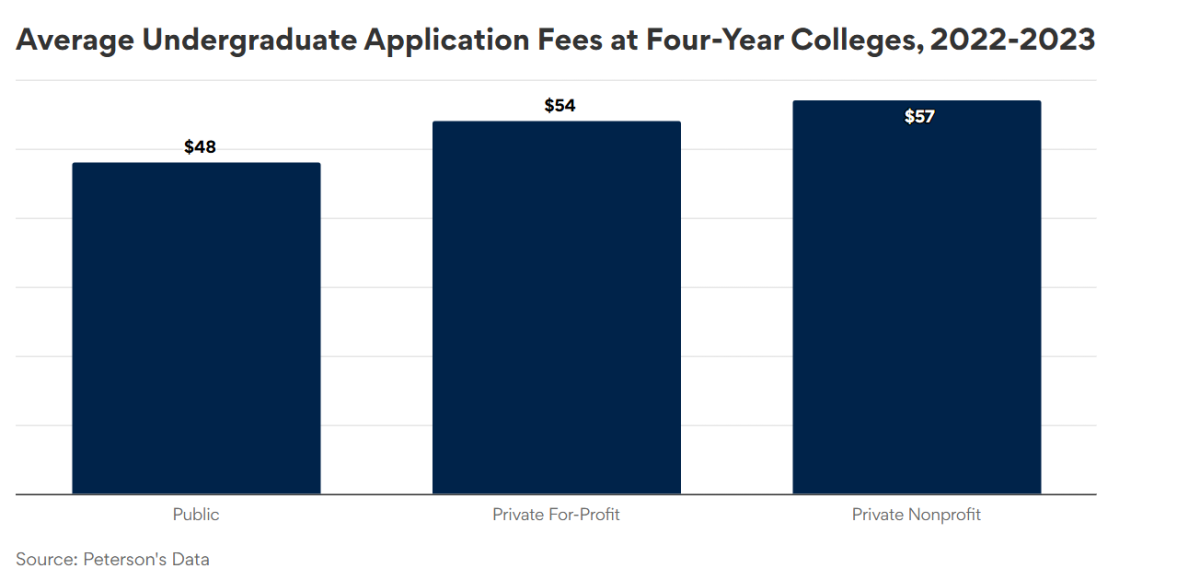To the majority of students here, graduation is a consistent source of excitement that they look forward to for the entirety of their four years of high school.
In fact, it is rare for graduation to be anything but a source of excitement. With pressure to do well in various AP classes, maintain a decent GPA and get accepted into a respectable college, graduating seems like an easy goal and few students ever worry over whether or not they will receive a diploma come spring. “Graduating is expected of everyone,” senior Jean Lyeo said.
The student body’s overall nonchalant attitude toward graduation is not surprising given how infrequently seniors fail to meet graduation requirements. In fact, the school’s graduation rate has steadily remained over 95 percent for the past six years and just last year the school had the highest graduation rate in the county at 98.1 percent.
The school’s high graduation rates become even more impressive when compared to the rest of the county, state and country. Last year, it was 8.27 percent higher than the county average, 10.49 percent higher than the state average and 15.1 percent higher than the national average. To put this data into perspective, if the class of 2016’s graduation rate was equal to the national graduation rate, 85 fewer students would have received diplomas last spring.
Clearly, the school has proven itself to be superior in regards to maintaining high graduation rates. However, this success did not come along by chance but instead is the product of an academically driven community, dedicated staff and dedicated administrative team.
How the school community contributes to higher graduation rates
One of the defining factors that sets this school apart from others in the county, state and even nation in regards to graduation rates is its academically driven community and hardworking students.
For the majority of students here, their ultimate goal is not to simply graduate, but to put themselves on track to achieve a certain career or profession, usually by pursuing post-high school education, and set themselves up for success. Ultimately, graduation is just a stepping stone on the path to this goal. “It’s an expectation that students are going to move through [and graduate] and students likewise have it in their sights that graduation is part of a longer term plan,” Principal Kimberly Boldon said.
Students set their sights on college and the future from almost the very beginning of the high school careers. They are motivated by both themselves and their parents to take challenging classes and put effort into maintaining good grades to ensure future success. However, this attitude toward academics is common throughout most of the county and is not telling of why this school specifically is so successful, although it does explain why Montgomery County’s graduation rates are higher than both the state and country’s graduation rates.
According to 12th grade administrator Joseph Mamana, what truly sets the school apart from others in the county is its specialized programs like the Humanities and Arts program, STARS and the internship program that focus students on specific career paths early on in which a diploma is necessary to follow. “We really pride ourselves on making sure that students have a program that fits for them whether it’s science and getting into a science internship, or maybe child development and getting into teaching,” Mamana said. “We really start getting people to start thinking about … what field [they] want to get into.”
Also contributing to the rarity of students failing to pass classes and meet graduation credit requirements is the dedication of faculty to ensuring students do well. “The students that are here, they work really hard and the staff supports our students a lot so [that] they [can be] very successful,” counselor Arielle Markiewicz said.
The majority of teachers here do not hesitate to reach out to students when they are struggling and are more than willing to provide any additional assistance to ensure that a student does well in their class. This in turn helps to raise the graduation rate, as students who do well academically usually earn all of the credits necessary to graduate and are in general more motivated to pursue post-high school education, which requires a diploma.
“Walk around the classrooms during lunchtime and you’ll see many teachers helping students. That just doesn’t happen automatically,” Mamana said. “That is a great attribute that supports our students and says ‘We’re not going to let you fail,’ and is another major key component to [the school’s high graduation rates].”
How administrative policies contribute to higher graduation rates
There are numerous policies in place at the school meant to ensure that as many seniors meet the graduation requirements as possible and receive a diploma. “We are always monitoring three different things: student service learning hours, all of the state testing that has to happen for students and then the coursework,” Boldon said.
The SSL hour requirement is not often the primary reason behind a student’s failure to graduate and, according to Mamana, around fifty percent of students earn their necessary hours by the beginning of their senior year. For this year’s graduating class, only around 30 students (roughly five percent of the class) have yet to complete their necessary SSL hours. The school has several policies in place to help motivate students to complete their SSL hours by graduation time, which likely has played a large role in the relatively low number of students who have yet to earn their hours. For example, students are not given a parking permit unless they have no remaining SSL hours to complete.
In regards to coursework and making sure that students are earning the credits necessary to graduate, administration takes a hands-on approach. They try to take notice of students struggling early on in their high school careers and place them in classes such as college prep and study hall so they have an opportunity to bring their grades up, preventing failure to graduate later on.
In addition, whenever administration encounters a student struggling with a particular subject or course they confer with the student, teacher, and the student’s family to solve the issue and get them back on track for success. “We try to come up with a plan and figure out what’s preventing [a struggling student] from accessing that class and tell them what’s at stake,” Boldon said. “We try to do it early and we try to do it often.”
The administrative team also monitors the grade they are responsible for throughout all four years of high school to make sure that they are on track to graduate. For example, over the summer eleventh grade administrator Joseph DuBoyce checked the transcripts of the students he is responsible for to ensure that they had the technology credits necessary to graduate.
Boldon described administration’s strategy as both “proactive” and “reactive,” allowing them to be prepared for whatever situation might come along and ensure that the maximum amount of students are graduating on time. “If someone fails something, we know what needs to happen to get them back on track and make sure that that’s available,” Boldon said.
Even if a student does not complete the graduation requirements by the deadline necessary to receive their diploma with the rest of their class in the spring, they can still graduate, but in August. These students will still have a formal graduation ceremony after completing their course work in summer school, however it will be held at the Carver Education Center instead of at DAR Constitution Hall. Administration will continue to work with students for years after their original graduation date to ensure they receive a diploma or, if there are extenuating circumstances, a GED. “We continue to monitor [students who failed to graduate with their class] and work on an exit plan so that there’s still hope,” Boldon said. “That high school diploma is really important to other futures, whether you’re going to get a job or go to school.”
Future graduation rates
As students continue to work hard academically, and administration remains persistent in their efforts to support them, the school will most likely maintain its superior graduation rates.
While last year’s graduation rate was one of the highest the school has ever seen, for the past few years it has hovered around 96 or 97 percent and the possibility of it dropping back down remains. The two major things that Mamana foresees as a challenge to students’ success and possibly their graduation is attendance and the infamous senioritis. As seniors are accepted into college, they often lose motivation to put effort into their schoolwork and give up, skipping classes and not completing their work. A lack of attendance and frequent missed work can result in the failure of a class, which in turn can prevent a student from participating in graduation.
Regardless of whether or not the graduation rate remains where it is, there is no doubt that the school has been widely successful in its efforts to ensure that as many students graduate as possible.
Sarah Greenberg
Senior News Editor








![Editors-in-Chief Ahmed Ibrahim, Helen Manolis, Cameron Cowen, Alex Grainger, Emory Scofield, Hayley Gottesman, Rebekah Buchman and Marley Hoffman create the first print magazine of the year during the October press days. “Only a quarter of the schools in MCPS have programs that are like ours, a thriving, robust program. That makes me really sad. This is not just good for [the student journalists] to be doing this, it’s good for the entire community. What [student journalists] provide to the community is a faith in journalism and that continues for their lifetimes," Starr said.](https://woottoncommonsense.com/wp-content/uploads/2025/10/wmpoFTZkCPiVA3YXA4tnGoSsZ4KmnKYBIfr18p3l-900x1200.jpg)